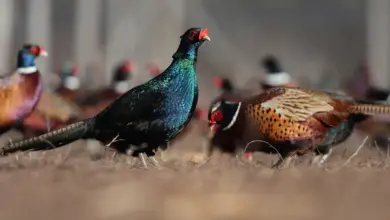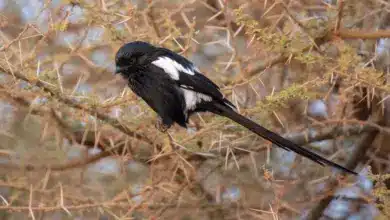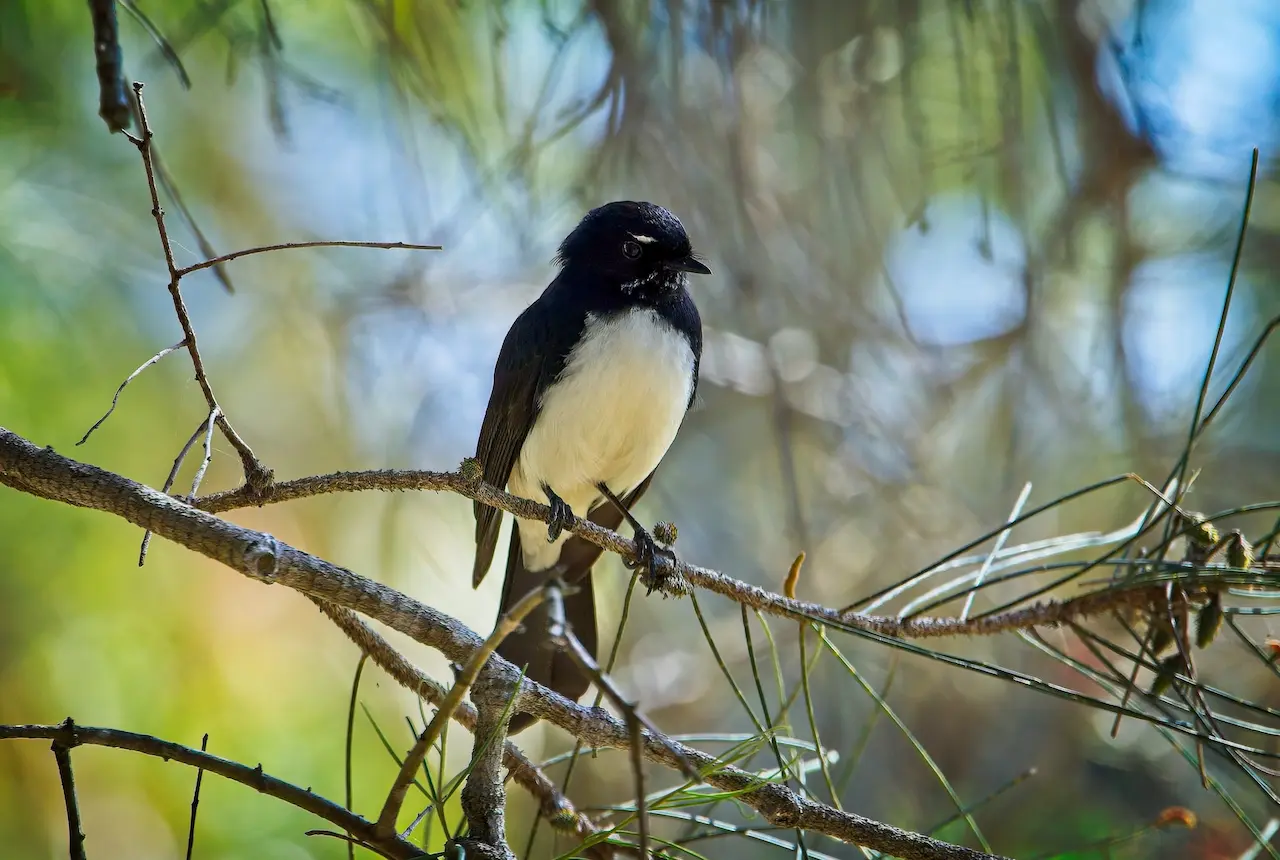Muscovy Duck Colors: What Colors Are Muscovies?
Muscovy duck colors come in a wonderful variety of colors. I will share some of them with you in this article.
The bird kingdom is colorful.
Color is used as a form of communication, as well as aiding with defense and camouflage.
Typically, the more colorful a bird, the healthier a bird is.
Muscovy ducks, on the other hand, are not known for their striking color patterns.
However, domesticated Muscovy ducks show a striking array of color varieties, depending on the breed, ranging from black to lilac to chocolate.
Read on to discover more about the colorful world of Muscovy ducks.
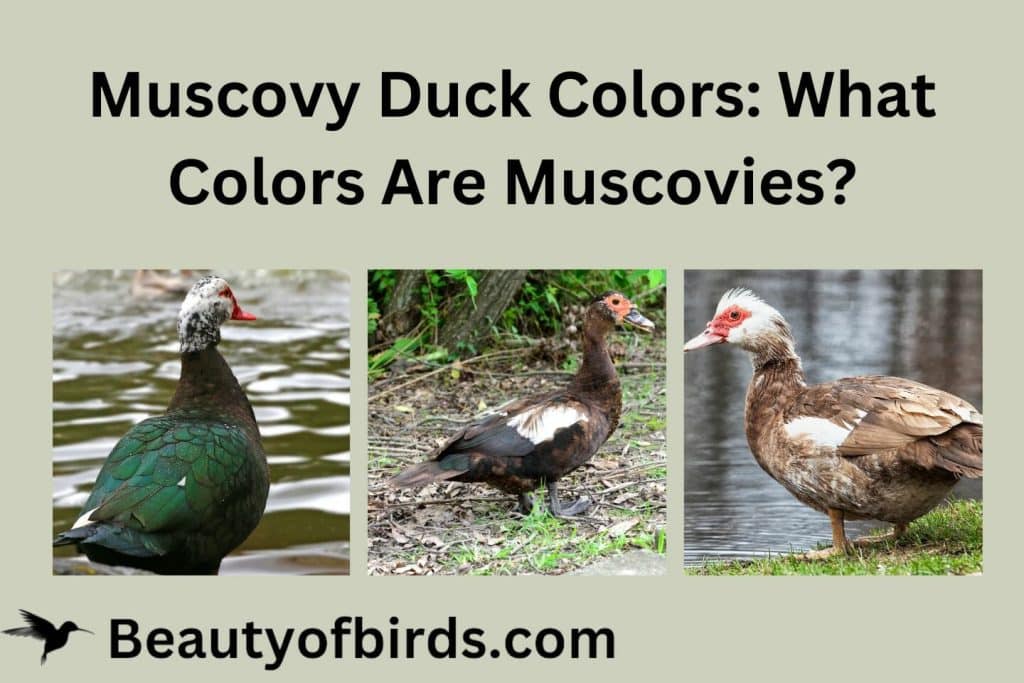
Muscovy Duck Color Varieties
Muscovy ducks are native to the forests of Central and South America.
To help individuals blend into the gloom of the forest understory, most wild Muscovies are covered in dark feathers, either black or blue.
The tips of the wing and tail feathers often have iridescent, glossy green feathers, as well as white wing patches.
It can be speculated that this mixed-color feather arrangement helps wild Muscovies escape the detection of predators, especially with any rays of sun that piece any open spaces in the forest canopy.
However, domesticated Muscovy ducks show a greater variety of color schemes. This is often due to small mutations in the base coloration that have been actively selected and bred.
Let’s explore some of the colors of domesticated Muscovy ducks:
Common or black
A direct descendent of the wild Muscovy duck, this is perhaps one of the most common color varieties. There are no visible mutations.
Similarly to the wild Muscovy, the common domestic duck breed will have white wing patches and some glossy green feathers if the sun hits just right.
Genetically speaking, genes that produce the black color variation are known as dominant.

Pied
Pied coloration refers to duck breeds with both black and white colorations.
The gene that acts upon white coloration is known as incomplete dominant.
This means that the white color is not fully expressed, creating patches of white areas across the black-feathered body.
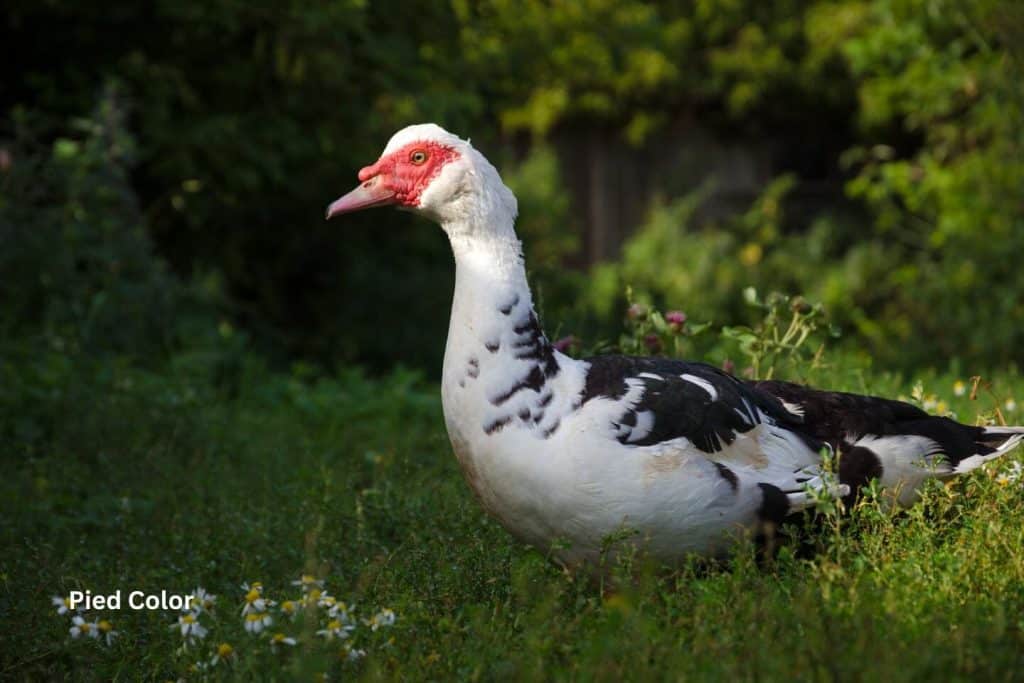
White
A white-feathered Muscovy duck contains the same genes as the pied variety of Muscovy ducks.
But let’s get even more technical…
To create a pure white Muscovy variety from the pied variety, the genes being selected must be homozygous.
This means that there need to be two identical alleles, a matching spot on the chromosome that has arisen via mutation of a particular gene.
Fortunately, breeders have perfected this, and you can purchase or raise fully white Muscovies without the faff of breeding generations of pied Muscovies.

Blue
The blue variety of Muscovy ducks is remarkably similar to common (or black) Muscovy ducks.
While they may appear the same color as common Muscovies, blues are normally a shade or two lighter or darker.
Blue Muscovies are bred from common (or black) muscovies and silver Muscovies.
Interestingly, breeding blue Muscovies will result in offspring, unlike their parents. This is referred to as an intermediary.
For example, if a blue Muscovy mates with another blue Muscovy, the resulting offspring will be a combination of common, silver, and blue.
Ducklings are distinguishable from common muscovies, as their beak and legs are noticeably paler.
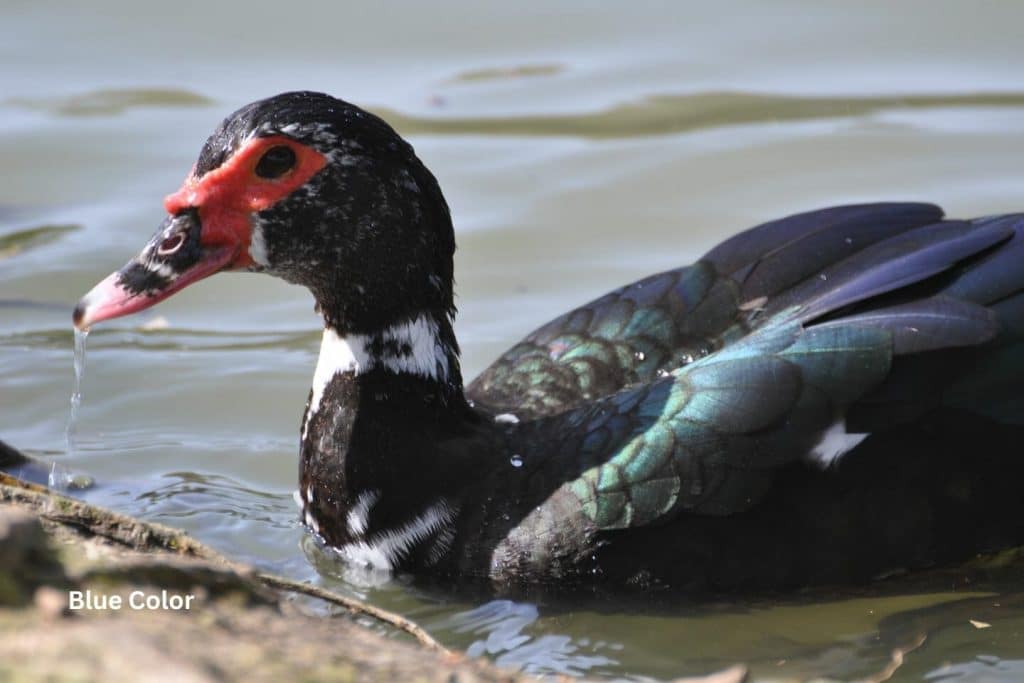
Silver/Lavender
Silver and lavender Muscovy duck breeds have caused quite a stir within the breeding community.
Are they the same breed?
Well, whilst they are both an incredibly similar shade of metallic silver, there are some slight differences.
Firstly, silvers are somewhat darker than the lavender breed.
Also, to breed lavenders, both parent ducks need to be lavenders. Again, genetically speaking, this is known as autosomal recessive.
If you breed a lavender with silver, you will get the blue muscovy duck variety.
Who knew genetics could be so complicated?
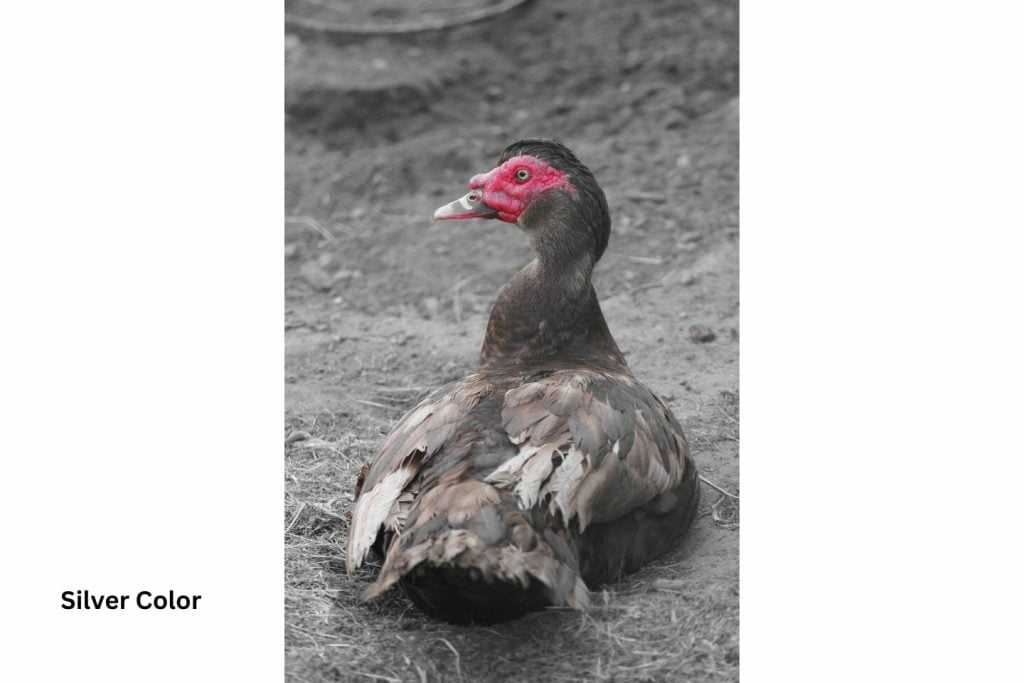
Bronze
Similar to lavender breeds, both parents need to carry the bronze gene to produce bronze offspring.
These varieties of ducks have chocolate-brown feathers, as well as glossy green wing tips.
Bronze Muscovies are not found in all countries. They are mostly found in Australia.
Unlike other Muscovy duck breeds, bronze Muscovies have a vibrant pink bill.
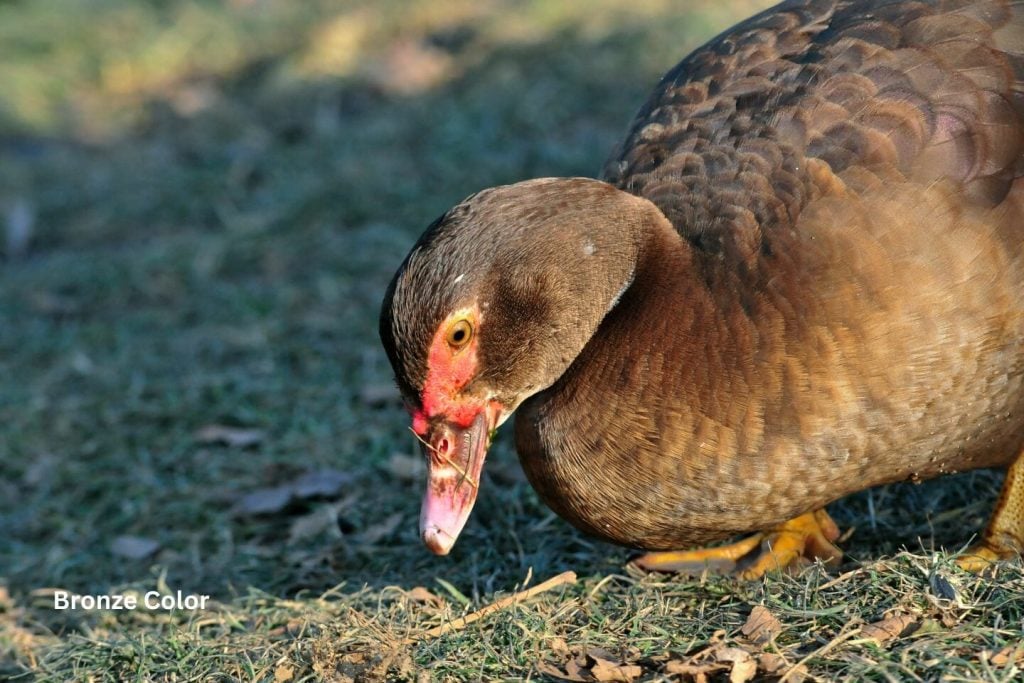
Chocolate
The chocolate variety of muscovy is typically a brown color, somewhat similar to what one might expect from the coloration of a chicken.
Exposed to sunlight, the feathers will appear a light brown.
The bill and feet of the chocolate muscovy contain brown pigment.

Sepia
The sepia variety of Muscovy duck is thought to be a true mutation within the Muscovy world, as they display a mix of characteristics.
These ducks have yellow/orange webbed feet, pink bills, and an iridescent and glossy sheen on their light brown feathers, reminiscent of the common Muscovy.
Magpie
The magpie Muscovy duck isn’t as much a specific breed of Muscovy but a pattern.
The defining features of a magpie Muscovy are the so-called head cap and saddle-back. The cap, saddle, and tail feathers are the same color, whilst the rest of the body is another color.
Typically, the case color is white. Gene mutations cause the cap, saddle, and tail to be different colors. These colors can be any of the previously discussed (i.e., lavender, bronze, common, etc.).
The gene is recessive.
This is not an exhaustive list of all possible Muscovy color combinations within Muscovy ducks.
You never know; you may even create a completely new variety by breeding two Muscovies of your own.

Muscovy Duck Eye Color Varieties
Defining eye color in Muscovy ducks is slightly different from how we would do it for humans.
For humans, eye color is determined by the iris.
However, when we talk about eye color in Muscovy ducks, we are referring to the sclera.
“The what?” I hear you ask.
The sclera is the fancy, or scientific term, for the white parts that surround our eyes.
Humans are thought to have white sclera to aid with communication whilst hunting, at least back when we were hunter-gatherers.
In other words, we are capable of seeing each other’s eye movement and using that movement as a form of communication without the use of speech, which would alert prey.
In ducks, the sclera is the area that holds color pigments.

They do not need white sclera, as they are not cooperative hunters, and thus do not need to communicate whilst hunting for mosquito larvae.
Instead, the color pigment within the sclera camouflages itself against predators and even rivals competing for the same food source.
As a general rule of thumb, the lighter the duck, the more likely it is to have blue eyes. For example, a white Muscovy duck will almost always have blue eyes.
However, more pigmentation within the feathers correlates to darker eyes.
Common, or black, Muscovy ducks have dark gray eyes.
This could also be a response to the brighter levels of the sun in their natural habitat of Central and South America, and the trait has been passed on.
Muscovy Duck Colors That Are Worth More?
There are numerous factors when it comes to the price of Muscovy ducks.
Age, sex, color, and distribution are all contributing factors.
But what is the most important factor?
Autosomal recessive genes within Muscovy ducks determine the coloration of individuals.
This is likely to increase the price, as two of the same varieties will be needed.
These include the lavender and chocolate varieties of Muscovy ducks.
For example, you can breed common Muscovies with a variety of other Muscovy varieties, such as lavender, chocolate, or sepia, and the result will always be common or a typical black coloration.
This is because the genes of the common coloration are dominant and will be expressed over recessive genes.

Those varieties that have recessive genes, such as lavender, chocolate, or sepia, must mate with a duck breed that shares the same recessive genes.
For example, two lavenders or two chocolates.
The most expensive Muscovy duck ever recorded, however, was a magpie pattern variety of Muscovy duck.
This Muscovy breed, similar to the ones mentioned above, displays recessive genes. The result is a striking white body with bold patches of black coloration.
The duck in question sold for a whopping £1500 ($1830). The large size of the magpie muscovy duck also contributed to the exuberant rate.
Don’t let this price scare you away. It is typical to see prices of anywhere between $10-15 for a drake or $15-25 for a hen, depending on the variety.
Frequently Asked Questions
Can Muscovy ducks be all black?
However, the top feathers are glossy. These feathers give off a green, iridescent shine. This is more noticeable on a sunny day.
The bill and feet of the common Muscovy duck will be black.
Can white Muscovy ducks have black wing feathers?
However, certain patterns, such as the magpie variety of Muscovy ducks, cause gene mutations.
The developing Muscovy duck can have black, as well as any other color, wing feathers, and tails.
Do Muscovy ducks change color?
However, if viewed in the sunshine, some feathers may appear glossy and iridescent.
The only time you will see a Muscovy duck change color is when a duckling reaches maturity.
Most muscovy duckling varieties are yellow, with some variation, and will develop their adult colors from as early as five weeks old.
Wrap Up
While Muscovy ducks may not be the most colorful birds on our planet, they certainly have a lot of color variations with the species.
Some, such as the common or white Muscovy variety, are relatively common.
Other varieties, such as lavender or sepia, are less common. This is due to the recessive genes that are not expressed as readily.
Rarer color variations will inevitably increase the cost of the Muscovy ducks. However, pricing should be in the region of between $10 – $25.
Thank you for reading. I hope all that talk of genetics didn’t put you off; after all, it really is an interesting subject to delve into.

